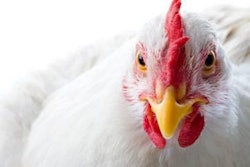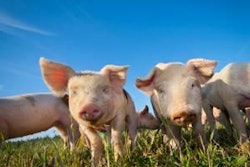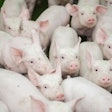“The jump in milk sticks out like a sore thumb,” the dairyman told John Binversie and Chad Butts, employees of Landmark Services Cooperative, of Cottage Grove, Wis. They knew what he meant. A collaborative effort between the trio had paid off — netting the south central Wisconsin producer an extra 6 pounds of milk per cow per day. Their success illustrates the importance of teamwork between dairy producers, agronomists and nutritionists, as well as the knowledge agronomists and nutritionists provide as trusted advisors on the farm.
Collaboration unearths productivity solutions
It took time to establish the partnership that led to the 6-pound-per-day hike in milk production.
Binversie, dairy team leader with Landmark’s animal nutrition division, knew the farm well, having served as the herd’s nutritionist for more than 15 years. Although the dairyman did not use Landmark’s agronomy services, Butts would periodically call on the farm. Over time, rapport developed and Butts was able to offer agronomic solutions for increasing plant populations and developing more uniform stands.
Up to this point, Binversie and Butts had called on the farm independently of each other. However, when Binversie broached the subject of brown midrib corn (BMR) silage, they teamed up to present a unified voice to the customer. They had a strong feeling BMR corn could meet both the agronomic and nutritional goals of the herd.
“Feed it for a few months,” Binversie said to his customer. “Prove it to yourself that it works or doesn’t work.”
And so last year, he gave it a try on some of the farm’s acreage.
Despite a drought year, yields were still pretty good, Butts says. They calculated the BMR silage would supply about three months’ worth of the farm’s silage needs. Since it was stored in silage bags and clearly labeled, it was easy to track the impact on the herd’s milk production when they started feeding it out.
“On the DHI sheets it was very evident what happened,” Binversie recalls. “The cows went up, on average, 6 pounds per cow, and they held that steady for 90 days.”
When the BMR ran out, milk production dropped 6 pounds a cow.
Separate divisions, central goal
Collaborating to meet the needs of their customer proved to be a win-win for Binversie and Butts, too. Not only was the production increase a nice pat on the back for Binversie, as the herd’s nutritionist, but it also helped the co-op establish a greater presence on the farm.
“Before the producer planted [BMR] the first time, we really had very little to minimal exposure on the farm with our agronomy team,” Binversie says. “Working together helped agronomy gain business on that farm.”
But that wouldn’t have been possible if Binversie and Butts hadn’t reached across their respective divisions to build a working relationship between themselves.
Binversie and Butts talk at least once a week, which isn’t always an attainable task in a large co-op like Landmark where there can be several divisions, each functioning as its own business unit.
It’s evident from this partnership that team building across business divisions certainly has its rewards. It also sends a message to the producer that his key advisors are on the same page.
“We have to make the producer profitable so that we remain profitable,” Binversie says. “It’s not just about selling something, but making sure it’s profitable for everybody.”

















